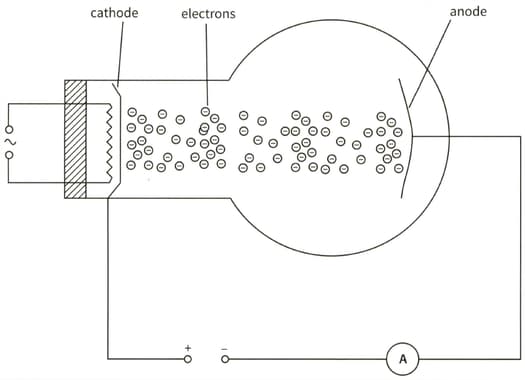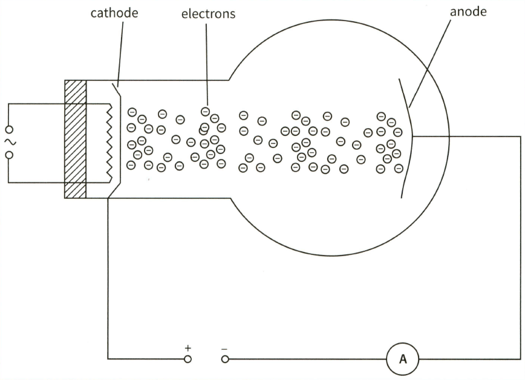This diagram shows an electron tube. Electrons moving from the cathode to the anode constitute a current. The current in the ammeter is .

(b) Calculate the number of electrons that hit the anode in 3 minutes.


Important Questions on Electric Current, Potential Difference and Resistance
This diagram shows an electron tube. Electrons moving from the cathode to the anode constitute a current. The current in the ammeter is .

(c) The potential difference between the cathode and the anode is . Calculate the energy gained by an electron as it travels from the cathode to the anode.
A length of copper track on a printed circuit board has a cross-sectional area of The current in the track is . You are provided with some useful information about copper:
of copper has a mass of
of copper contains atoms In copper, there is roughly one electron liberated from each copper atom
(a) Show that the electron number density for copper is about .
A length of copper track on a printed circuit board has a cross-sectional area of The current in the track is . You are provided with some useful information about copper:
of copper has a mass of
of copper contains atoms In copper, there is roughly one electron liberated from each copper atom
(b) Calculate the mean drift velocity of the electrons.
(a) Explain the difference between potential difference and e.m.f.
(b) A battery has negligible internal resistance, an e.m.f. of and a capacity of (ampere-hours). Calculate:
(i) The total charge that it can supply
(b) A battery has negligible internal resistance, an e.m.f. of and a capacity of (ampere-hours). Calculate:
(ii) The total energy that it can transfer.
(c) The battery is connected to a lamp. Calculate the resistance of the lamp.
Some electricity-generating companies use a unit called the kilowatt-hour to calculate energy bills. is the energy a kilowatt appliance transfers in hour.
(a) Show that is equal to .
